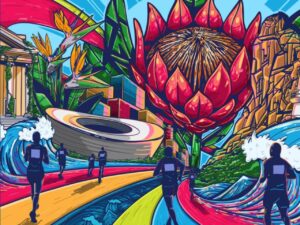Thanks to a man, his ego and his little moustache, the swatstika has been ruined for the whole world – because, you know, Westerners are like the only people who live on the planet.
Traditionally a sign of good fortune and well being, Hitler projectiled the swatstika into the evil side of symbols by flipping the original symbol to flow in the opposite direction. But how’s this for totally ruining everything: Japan uses a little swatstika-esque sign, known to them as the manji, to identify Buddhist temples on maps – and is considering changing it for the 2020 Olympics:
The symbol, from ancient Sanskrit, means happiness and prosperity. It has been used for centuries by Hindus and Buddhists, and has turned up in archaeological digs in Europe. But many Western tourists associate it with anti-Semitism and the Holocaust because the emblem was adopted by Nazi Germany to try to enhance a sense of ancient lineage.
The swastika in Japan — which usually points counter-clockwise, the reverse of the Nazi symbol — has been used for centuries in Buddhist decorations and to denote Buddhist temples on maps.
It is literally used all over the country, and is even the official emblem for Hirosaki, a city in northern Japan.
But the country, as kind-hearted and thoughtful as they are, are talking of replacing the symbol with something else so as not to offend anyone and a final decision is expected in late March following a period of seeking public comment.
Japan’s main Buddhist group is nonchalant because the change doesn’t affect domestic maps and therefore likely won’t alter perceptions at home.
We are aware that some people say the ‘manji’ symbol could remind them of the ‘hakenkreuz’ symbol, which was created much later in history.
Even though we have more foreign visitors, our symbol that decorates each temple will stay.
Public opinion is divided:
Supporters for the change say it would help avoid confusion among tourists, while opponents say there is no need to change the ancient sign just to cater to foreigners. Instead, they say, the symbol should be kept as a way to teach people about the ancient history behind it.
Others point out that the “manji” symbol turns the opposite way from the Nazi symbol, so it is different.
To be fair, people need to understand that when they are entering a new country, there will be various culture differences and understandings. Also, don’t maps generally have keys alongside them to indicate what a symbol means anyway? Whatever.
[source: newser]





